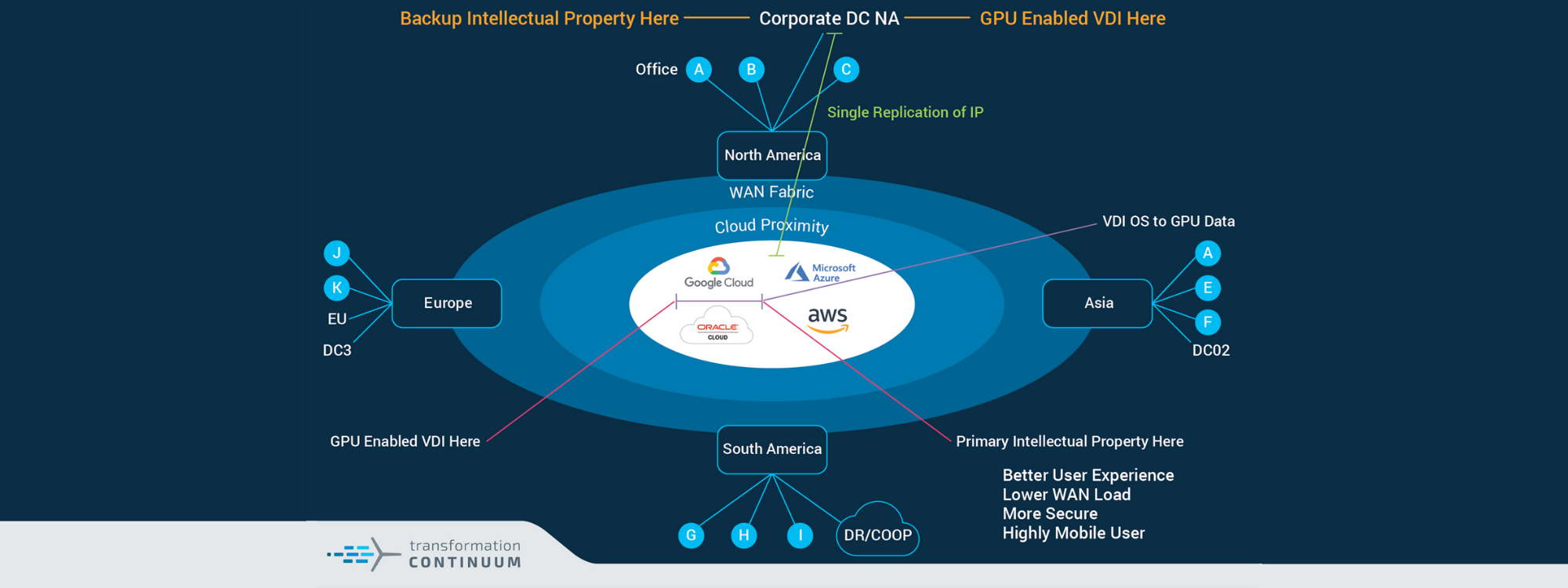The Cloud has changed where users’ data and their applications live. In a distributed world, latency between the end user and the application is a quick way to poor user satisfaction.
In the past, vast amounts of network bandwidth was used to replicate required data closer to the end user and their end user device. This was not only expensive by caused the proliferation of intellectual property and created data gravity at remote sites. The more copies of the data living in more locations made it less secure in multiple ways. Users would need to wait for changes to save and replicate to other locations before the file could be opened again. This led to large delays in project completion.
Data Gravity in
60 Seconds
Data Gravity in
60 Seconds
Data Gravity in
60 Seconds
Virtual Desktops and Cloud opened a lane to allow users to secure their data in the cloud while keeping the end user device (the virtual desktop) in close proximity to the data. This is very applicable to GPU enabled VDI for users where the files are extremely large. New cloud based VDI designs allow architects and administrators to reclaim that bandwidth used for data replication and repurpose it for VDI connections and other items.
Now, regardless of where the user is, they connect to their virtual desktop and access their data and application through a secure centralized cloud architecture.
This style of architecture makes the end user experience seamless, keeps the intellectual property secure and proofs against data gravity at remote sites.
Now, regardless of where the user is, they connect to their virtual desktop and access their data and application through a secure centralized cloud architecture. This style of architecture makes the end user experience seamless, keeps the intellectual property secure and proofs against data gravity at remote sites.
At Continuum we work with our customers to develop strategies and architectures that provide the correct business outcomes without falling into the traps of data gravity, architecture driven latency and other often overlooked technical challenges.
Need help? Book a consultation with Continuum.

